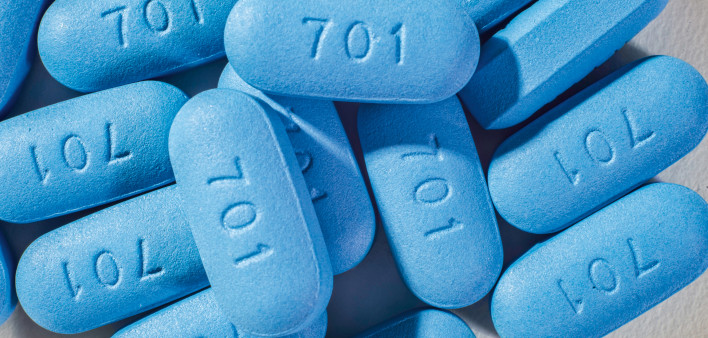The introduction of Truvada (tenofovir disoproxil fumarate/emtricitabine) as pre-exposure prophylaxis (PrEP) in Scotland was followed by an impressive nationwide decline in new HIV cases among men who have sex with men (MSM).
A new study found a steep decline in HIV diagnoses among MSM prescribed PrEP through Scotland’s sexual health clinics and, to a lesser extent, among HIV-negative MSM who attended such clinics but had not received Truvada.
This study follows an important ongoing real-world study in Australia that has seen similarly steep declines in new HIV cases among MSM after the highly successful introduction of PrEP in that nation.
Together, these two studies firmly establish PrEP’s awesome power as a public health tool to help curb the HIV epidemic among MSM. (PrEP is not widely used among other populations at risk for the virus.) They thoroughly refute claims made by AIDS Healthcare Foundation president Michael Weinstein during the early years of the PrEP era (which began in 2012 in the United States) that the HIV prevention tool would never have such a public health–level impact.
While much ink has been spilled lamenting PrEP’s limited uptake in the United States, it has in fact charted remarkable success in reducing HIV in cities where it has become popular among white MSM in particular, such as New York Cityand San Francisco. But since PrEP’s use has remained relatively limited among Black MSM living in the South, who are the nation’s highest-risk group, the prevention intervention has thus far failed to send the nationwide HIV rate on a decline similar to those seen in Australia and Scotland.
A key problem is that the United States lacks the nationwide network of sexual health clinics that have been the engines of PrEP’s success in the British Commonwealth nations, including England, where HIV has declined precipitously among MSM in recent years. By contrast, the U.S. health care system offers people at risk for HIV who would stand to benefit from PrEP an often maddening patchwork of bureaucratic hurdles that can alienate young people in particular.
Publishing their findings in the journal AIDS, Claudia Estcourt, MBBS, of Glasgow Caledonian University, and her colleagues analyzed HIV diagnosis rates from national surveillance data in Scotland as well as diagnosis rates in a cohort of HIV-negative MSM attending sexual health clinics. They compared these rates as seen in July 2015 to July 2017 to the period that followed PrEP’s introduction in the nation, July 2017 to June 2019.
Of 16,723 MSM who attended the sexual health clinics during the post-PrEP-introduction period, 19.5% received at least one prescription for PrEP.
Nationwide, new HIV diagnoses among MSM declined 20%, from 229 during the pre-PrEP period to 184 during the post-PrEP period. National diagnoses of recently acquired cases of HIV declined 36% among MSM, from 73 to 47 cases between the two periods.
Among the HIV-negative MSM attending the sexual health clinics, the HIV diagnosis rate per 1,000 cumulative years of follow-up declined from 5.13 cases pre-PrEP to 3.25 cases post-PrEP. After adjusting the data to account for various differences between the men, the study authors found that the diagnoses rate declined by 43%.
Among MSM prescribed PrEP through the sexual health clinics, the HIV diagnosis rate declined 75% between the pre- and post-PrEP periods, while the rate declined 32% among those HIV-negative men attending the clinics who were not prescribed PrEP. In other words, prescribing PrEP to some MSM apparently led to a spill-over effect that benefited the HIV-negative MSM population as a whole.
None of the four men who were ever prescribed PrEP and were diagnosed with HIV were taking Truvada during the period when they contracted the virus.
“We demonstrate national population-level impact of PrEP for the first time in a real-world setting,” the study authors concluded. “HIV incidence reduced in MSM who had been prescribed PrEP and, to a lesser extent, in those who had not. Promotion of the benefits of PrEP needs to extend to MSM who do not access sexual health clinics.”
To read the study abstract, click here.







Comments
Comments